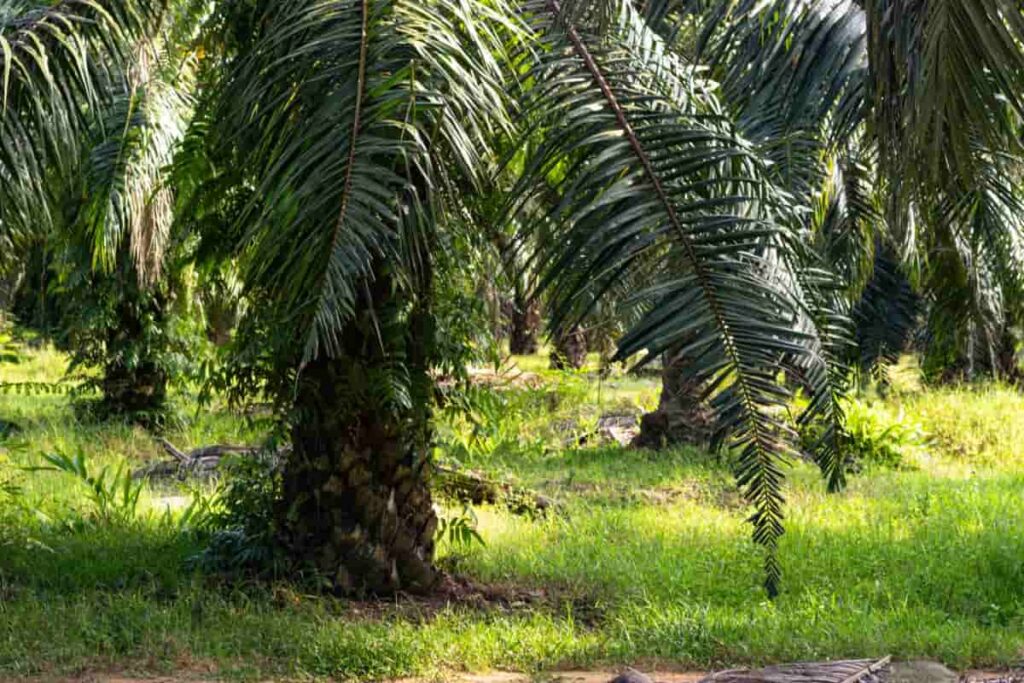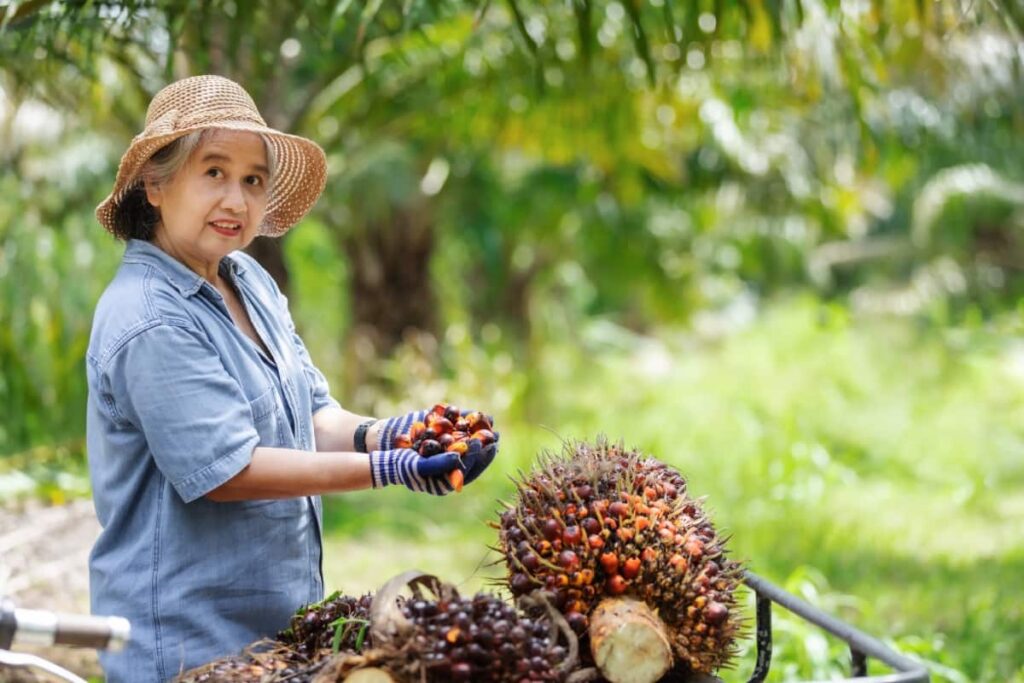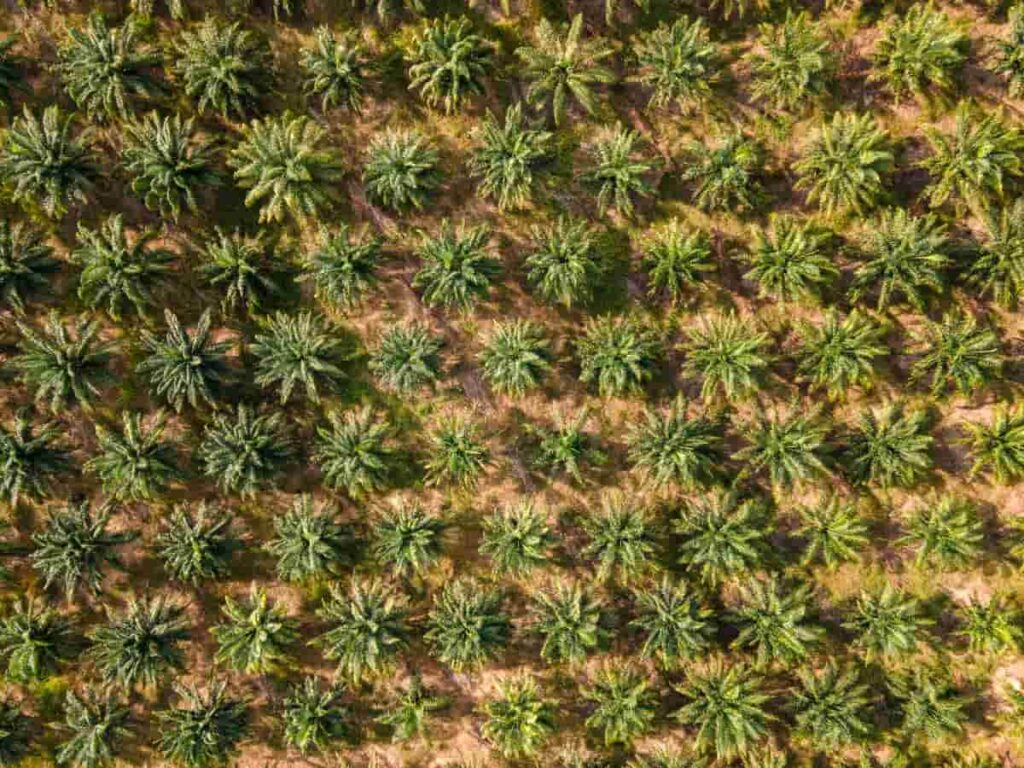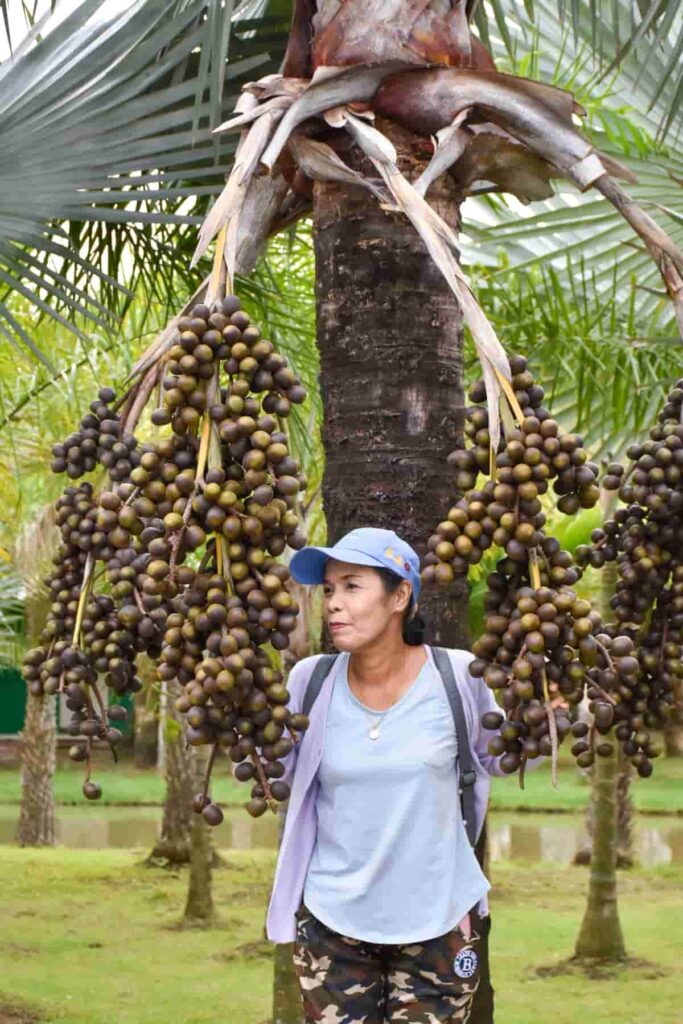Oil Palm (Elaeis guineensis), an African tree in the palm family (Arecaceae), is cultivated as a source of oil. Oil Palm farming in Malaysia brings forth a multitude of benefits, both for the country and for the global market. This industry serves as a significant source of employment, providing countless job opportunities to Malaysians across various stages of production – from cultivation to processing.

Oil Palm Farming in Malaysia
History of Oil Palm Farming in Malaysia
Oil Palm farming in Malaysia has a rich history that dates back to the 1870s. The cultivation of Oil Palms was introduced by British colonizers who recognized the potential of this tropical crop. The first commercial Oil Palm plantation was well-known in Selangor in 1917, marking the beginning of a thriving industry. Over time, more plantations were set up across Malaysia, transforming the landscape and contributing to the country’s agricultural development. As demand for palm oil grew globally, Malaysia emerged as the leading producer and exporter.
Overview of the Palm Oil Industry in Malaysia
Oil Palm farming in Malaysia has played a significant role in the country’s agricultural industry for many years. With its tropical climate and fertile soil, Malaysia provides an ideal environment for cultivating Oil Palms.
Malaysia boasts vast areas dedicated to Oil Palm cultivation. The states of Sabah and Sarawak on Borneo Island, as well as Peninsular Malaysia, are particularly renowned for their extensive plantations that stretch across hectares of land.
The Malaysian Palm Oil Board (MPOB) oversees the development and regulation of the palm oil industry in Malaysia. They have implemented policies and standards aimed at ensuring sustainable practices while maximizing productivity.
Oil Palm-Grown Areas in Malaysia
The main region where Oil Palm is grown in Malaysia is Sabah, located on the island of Borneo. With its abundant rainfall and suitable temperatures, Sabah accounts for a significant portion of Malaysia’s palm oil production. Other major areas include Sarawak, Johor, Pahang, and Perak. In these regions, large plantations can be seen stretching as far as the eye can see.
The sight of rows upon rows of Oil Palm trees is impressive and reflective of the importance placed on this sector in Malaysia’s agricultural landscape. The expansive land used for Oil Palm cultivation provides employment opportunities and also serves as a critical income source for many farmers in rural areas.
Oil Palm Varieties in Malaysia
The most commonly grown Oil Palm variety in Malaysia is the Tenera Oil Palm. This hybrid variety is a cross between the Dura and Pisifera palms, combining the desirable traits of both parents. The Tenera palm produces high-quality oil with a relatively high yield per hectare, making it highly sought after by farmers.
In case you missed it: Citrus Farming in Malaysia: Cultivation Practices, Production Cost, and Profit

Another popular variety in Malaysia is the Pisifera palm. Although it has lower fruit yields compared to other varieties, it boasts excellent oil quality. Its thin-shelled fruits also make harvesting easier for farmers. Farmers in Malaysia understand that choosing the right variety for their plantations can significantly impact their success and profitability.
Malaysian Oil Palm Farming Cost per Acre
The Oil Palm cost per acre in Malaysia can change based on various factors such as land preparation, planting materials, labor, fertilizers, pesticides, and other operational expenses.
| Cost Item | Estimated Cost (Per Acre) in RM |
| Seedling Cost | |
| Number of Seedlings (approx. 136 per acre) | 136 seedlings |
| Cost per Seedling | RM 10 – RM 15 |
| Land Preparation | RM 1,000 – RM 2,000 |
| Fertilization | |
| Initial Year | RM 500 – RM 1,000 |
| Annual Cost Thereafter | RM 1,000 – RM 2,000 |
| Irrigation Setup | RM 500 – RM 1,500 |
| Labor | |
| Planting and Maintenance | RM 2,000 – RM 3,000 |
| Pest and Disease Control | RM 500 – RM 1,000 |
| Harvesting Tools and Equipment | RM 1,000 – RM 2,000 |
| Miscellaneous Costs | RM 1,000 – RM 2,000 |
| Total Estimated Cost (First Year) | RM 7,510 – RM 12,500 |
| Total Annual Cost (Subsequent Years) | RM 4,000 – RM 6,500 |
Malaysian Oil Palm Farming Profit per Acre
Malaysian farmers have been able to generate significant profits from cultivating Oil Palm on their land, making it a lucrative investment opportunity. The profit per acre in Malaysian Oil Palm farming can change based on various factors such as the age and health of the plantation, market prices for palm oil, yield per hectare, and production costs.
| Item | Amount in RM |
| Revenue | |
| Average Yield per Acre (Year 3 onwards) | 12 – 15 tonnes |
| Market Price per Tonne of FFB | RM 500 – RM 600 |
| Total Revenue (Avg.) | RM 6,000 – RM 9,000 |
| Costs (from the previous table) | |
| Total Annual Cost | RM 4,000 – RM 6,500 |
| Profit | |
| Gross Profit (Revenue – Costs) | RM 2,000 to RM 2500 |
Average Yield of Oil Palm per Acre in Malaysia
The average yield of Oil Palm per acre in Malaysia is 12 – 15 tonnes (Year 3 onwards), which is a crucial factor in determining the profitability of this industry. With its abundant natural resources, Malaysia has become one of the leading palm oil producers globally.
Oil Palm Farming Regulations and Policies in Malaysia
The Malaysian government recognizes the importance of this sector and has implemented various policies aimed at supporting sustainable growth within the industry while ensuring social equity among stakeholders. Additionally, Malaysian palm oil is renowned for its quality. The country strictly adheres to stringent regulations and standards to ensure sustainable farming practices and maintain product integrity.
These measures include environmental conservation efforts, responsible land use policies, and certification programs such as RSPO (Roundtable on Sustainable Palm Oil). The key regulation is the Malaysian Sustainable Palm Oil (MSPO) certification scheme. This initiative requires all palm oil producers to comply with a set of sustainability criteria, including environmental conservation, social responsibility, and good agricultural practices.
The government also enforces laws that prohibit illegal deforestation for Oil Palm plantations. The country promotes fair employment practices and prohibits child labor through legislation such as the Employment Act and the Child Act. These regulations and policies play a main role in maintaining sustainable growth within Malaysia’s Oil Palm farming industry.
Oil Palm Cultivation Practices and Harvesting Methods in Malaysia
Oil Palm cultivation practices in Malaysia are highly sophisticated and efficient, making it one of the leading countries in the industry. Farmers employ a range of techniques to ensure optimal growth and maximize yields. To begin with, selecting the right site for planting is crucial. Oil Palms require well-drained soil and thrive in tropical climates, which makes Malaysia an ideal location.
Once the site is chosen, farmers prepare the land by clearing vegetation and plowing or harrowing to improve soil structure. Next comes planting the Oil Palm seedlings. The seedlings are carefully selected from high-quality parent stock to guarantee strong and healthy plants. Fertilizers containing nutrients such as nitrogen, phosphorus, potassium, magnesium, and micronutrients are applied regularly to ensure robust growth.
Weeding is another important practice in Oil Palm cultivation. Manual weeding or herbicide application helps keep weeds under control while minimizing competition. Regular pruning is also carried out to remove old fronds that no longer contribute significantly to photosynthesis.
In case you missed it: How to Start Eggplant/Brinjal Farming in Malaysia: Check How this Guide Helps to Grow Eggplant

Harvesting methods vary depending on whether they are for fresh fruit bunches (FFB) or loose fruits (LF). For FFB harvesting, workers use long poles fitted with cutting tools to detach ripe bunches from the tree trunk without damaging them. In the LF harvesting method called “stripping,” mature fruits are manually stripped off using a specialized tool known as a stripper.
Economic Contribution of the Palm Oil Sector to Malaysia’s GDP
The palm oil sector plays a significant role in Malaysia’s economy, contributing greatly to the country’s GDP. It is one of the major contributors to Malaysia’s agricultural sector and overall economic growth. With its vast plantations and robust processing industry, the palm oil sector generates substantial revenue for the nation.
It provides employment opportunities for thousands of workers across various stages of production – from planting and harvesting to processing and exporting. Not only does this industry contribute to job creation, but it also boosts Malaysia’s export earnings. The global demand for palm oil remains high due to its versatile uses in food products, cosmetics, biofuels, and more. As such, Malaysia has maintained its position as the leading exporter of palm oil worldwide.
The economic contribution of the palm oil sector goes beyond just direct income generation; it also supports other industries such as transportation, logistics services, packaging materials manufacturing, and more. This ripple effect helps stimulate economic growth in both rural areas where plantations are located and urban centers where related businesses thrive.
In case you missed it: Best Fertilizer for Areca Palms: How to Apply and When to Apply for Dypsis Lutescens

Conclusion
Malaysia is the 2nd-largest producer of palm oil globally, and its importance in the country cannot be overstated. Oil Palm farming plays a crucial role in Malaysia’s economy, providing employment opportunities for thousands of people and contributing significantly to the nation’s GDP.
- Management Pests and Diseases in Your Cotton Field
- Sheep Farming Business Plan for Beginners
- Aquaponic Farming at Home: A Step-By-Step Guide
- Profitable Village Farming Business Ideas in 2024
- High-Yield Aquaculture: Fast-Growing Fish for Farming
- Effective Fish Pond Construction Techniques for Beginners
- Irrigation and Water Management in Pineapple Farming
- Blossom to Harvest: Mastering Flowering and Pollination in Papaya Farming
- Pig Fattening Essentials: From Selection to Sale for Beginners
